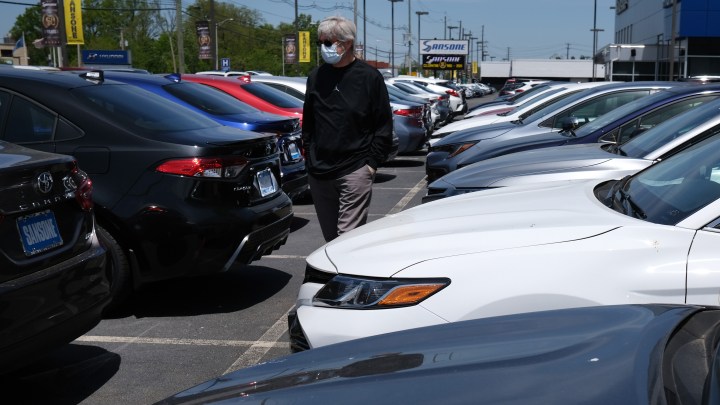
Vehicle sales tell story of separate economic realities

New car and truck sales were down 15% last year. That may not be surprising, considering the shutdowns and high unemployment in the spring.
But what might come as a surprise is that the average price of new vehicles that did sell was $40,000 in the fourth quarter. That’s the highest ever.
Who is buying what kinds of cars is another example of two different realities coexisting in this economy.
For a lot of people, their 2020 finances were OK. They were gainfully employed and received stimulus money. For many others, 2020 was an exercise in financial hardship.
And that means, according to analyst Mike Ramsey of Gartner, a research group, many people who would have bought a less expensive new vehicle were not able to do so.
“The average price, transaction prices, moved up,” he said, “because the vehicles that continued to sell were selling to people who were buying more expensive vehicles.”
So people priced out of new vehicles turned to buying used ones. Those sales were down from the year before but still higher than expected in 2020.
The prices of those vehicles were also pushed higher, according to Kristin Dziczek, with the Center for Automotive Research. She said, “We really saw skyrocketing prices in the used-car market.”
Part of that increase was caused by supply and demand, Dziczek explained. When manufacturing halted early in the pandemic, fewer new vehicles were on the market. That drove shoppers to look at used ones.
But used cars were not necessarily a bargain anymore, said Edmunds analyst Jessica Caldwell.
One reason, Caldwell said, is that a lot of the used cars in demand tended to not be cars. Instead, they were “more expensive trucks, SUVS, a lot of electrified vehicles, and that is bringing up prices.”
Even with low interest rates, vehicle purchases can turn into long-term debt for people.
Vehicle loan debt was already growing before the pandemic and is increasing, according to a report by the New York Federal Reserve. Its researchers found “auto loan originations reached a record high for the series, with $168 billion in newly originated auto loans, which includes both loans and leases.”
In addition, the CARES Act did not include auto loan relief. Charlie Chesbrough, an analyst with Cox Automotive, said: “Taking on debt for personal transportation is a real challenge for American families.”
But people need vehicles, he said. “If I need personal transportation, I need to get to my doctors’ appointments or my job, even a pandemic’s not going to keep me from going and getting a vehicle.”
And, he said, that is why even in 2020, vehicles were selling well.
There’s a lot happening in the world. Through it all, Marketplace is here for you.
You rely on Marketplace to break down the world’s events and tell you how it affects you in a fact-based, approachable way. We rely on your financial support to keep making that possible.
Your donation today powers the independent journalism that you rely on. For just $5/month, you can help sustain Marketplace so we can keep reporting on the things that matter to you.

















